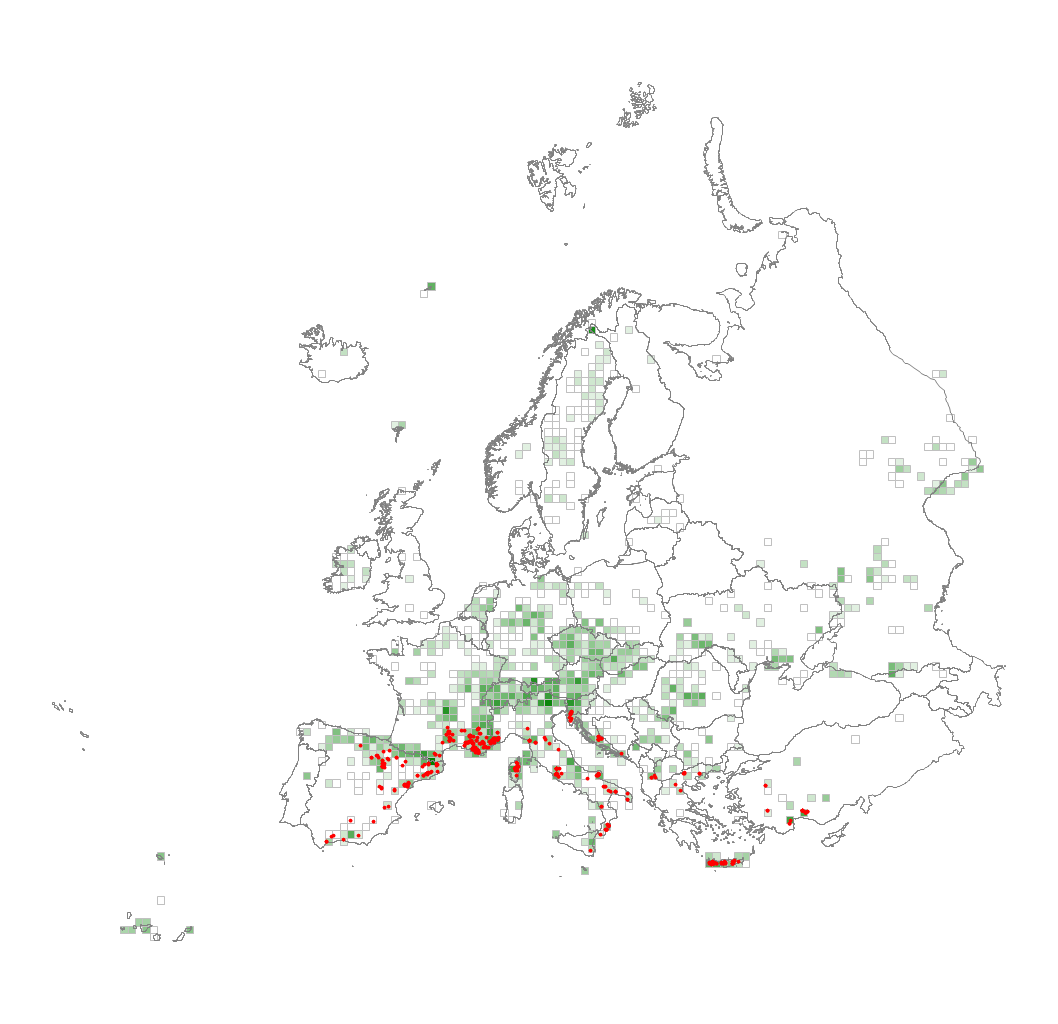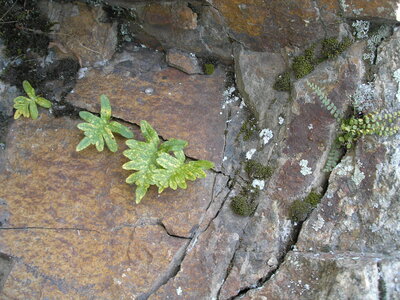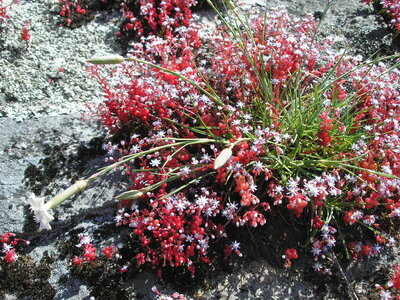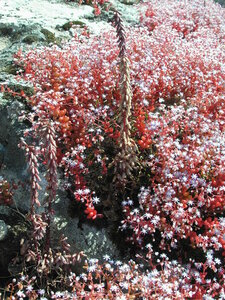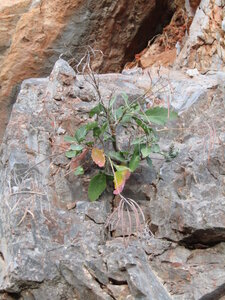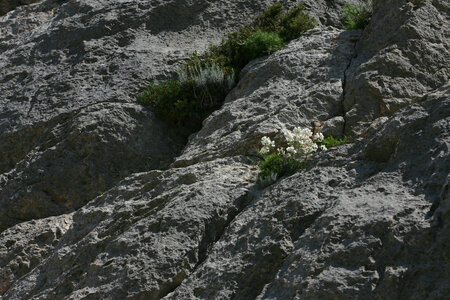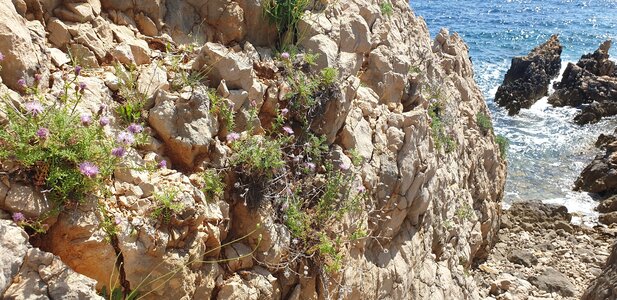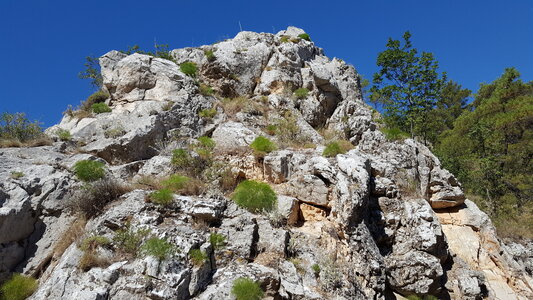U38 Mediterranean base-rich inland cliff
Cliffs of limestone, calcareous conglomerates and other base-rich rocks in the lowlands to high mountains throughout the Mediterranean basin (excluding salt-sprayed coastal situations). They are characterised by a diverse flora of calcicole vascular perennial plants, often of rosulate, prostrate, succulent and cushion form, tussock grasses, small ferns, dwarf shrubs, shrubs and sometimes woody climbers and small trees, rooted in fissures and crevices. There are also bryophytes, lichens and epi- and endolithic micro-organisms. Towards the foothills and lowlands, the habitat is more prone to be affected by human disturbances, especially its species composition. High mountain cliffs are usually well preserved, with a high degree of naturalness.
Chytrý M., Tichý L., Hennekens S.M., Knollová I., Janssen J.A.M., Rodwell J.S. … Schaminée J.H.J. (2020) EUNIS Habitat Classification: expert system, characteristic species combinations and distribution maps of European habitats. Applied Vegetation Science 23: 648–675. https://doi.org/10.1111/avsc.12519
Version 2025-10-03, https://doi.org/10.5281/zenodo.16895007.
For the official presentation of the EUNIS Habitat Classification from the European Environment Agency, please see: EUNIS Terrestrial Habitat Classification 2021. The FloraVeg.EU presentation may show modifications and partial updates to the habitat classification.
